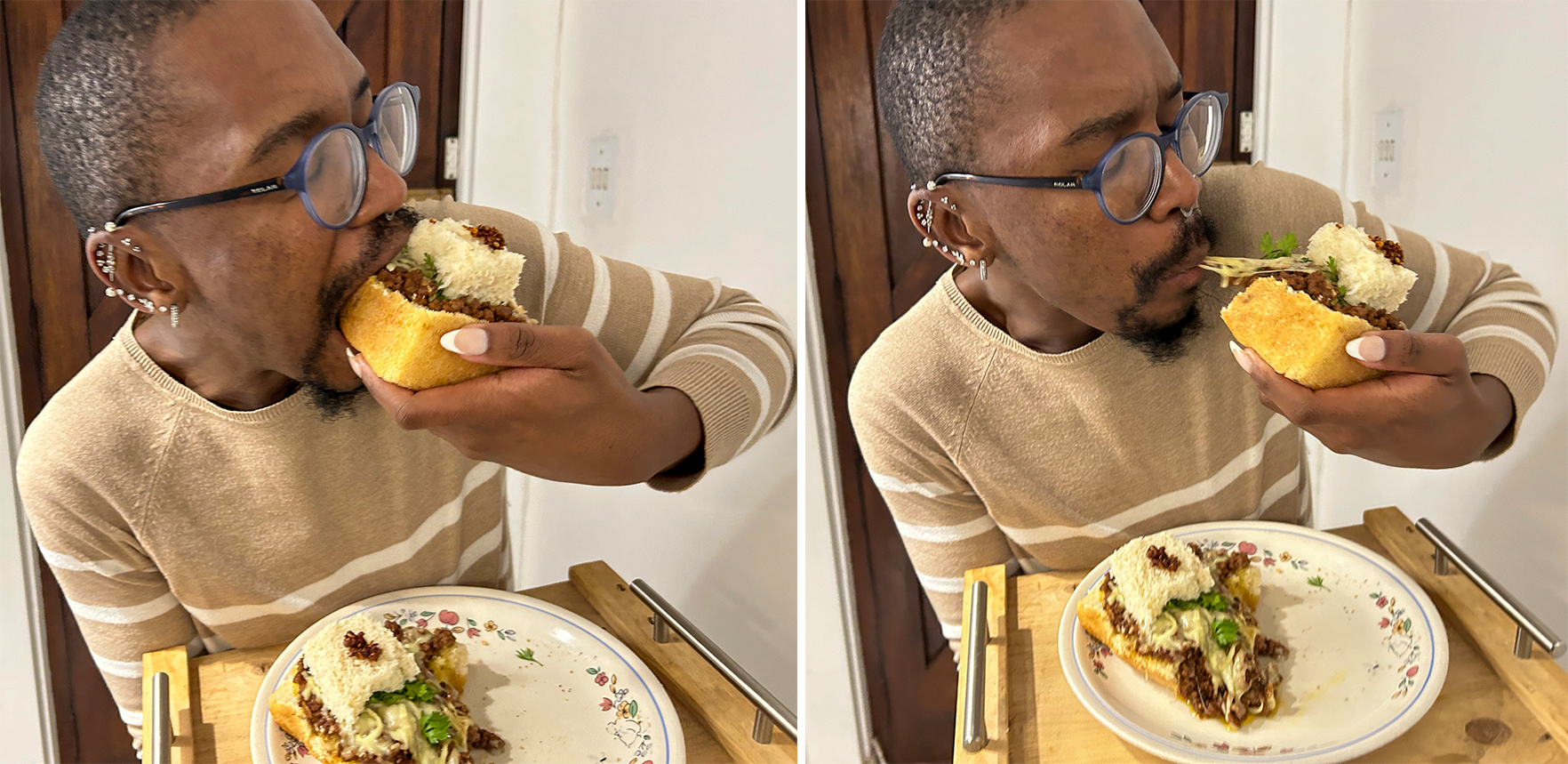There has been a raging debate about the origins of a bunny chow, also known as kota or spatlo (with alternate spellings of sphatlo, spathlo, sphathlo) — depending on which part of South Africa you live in or come from.
I grew up in a township called Dobsonville in Soweto and we called the street food kota, a term I’ll be using throughout this column.
Let me declare my bias and patriotism for Soweto right up front, dear reader. Of course, I believe that the origins of kota started in Gauteng, specifically Johannesburg or Soweto, where everything great in South Africa comes from. After all, Soweto played a crucial role in the country’s storied transition into a democracy and the place birthed many anti-apartheid luminaries.
Although this column is a personal reflection, it must still be rooted in the principle of journalism and at least find refuge in some facts and an accurate depiction of history. A quick search on Google spits out some interesting history and stories (but not verified) about the origins of the kota.
In short, a kota is a massive sandwich that is made with a hollowed-out loaf of bread, and filled with a variety of ingredients. The ingredients used in a kota have long fuelled the debates and confusion about its origins. A kota that is filled with beef mince and mashed potatoes is a common staple in Soweto and surrounding townships. In some townships in Pretoria, the kota or spatlo would be filled with polony, Russians or viennas, cheese, atchar, potato (slap) chips, and sauces (barbecue, tomato, and sweet chilli).
One filled with curry would be more synonymous with KwaZulu-Natal. And in the province, the food item would be referred to as bunny chow.
Sandwich expert Jim Behymer has the perfect description of the different elements of a kota. Behymer writes here:
“It (a kota) is a street food, combining elements of the polyglot cuisine of South Africa – the atchar pickle introduced by South Asian indentured servants and migrants, sausages brought to South Africa by Russian Jews in the late 19th century, the Dutch braai tradition of flame-roasted meats, the fried potatoes that go wherever Western European settlers go.”
Even Behymer and other pieces of writing provided by auntie Google accept that the kota’s origins can be traced back to Gauteng.
I bring anecdotal evidence to the debate about the origins of kota as I grew up with the version filled with beef mince and mashed potato. I have fond memories of buying this version at spaza shops, which are the backbone of the township economy.
In the 90s, spaza shops sold kotas for less than R10, way cheaper than the price of hamburgers, which were considered a once-in-a-while treat. The mince was soft and carried an intense beefy flavour. The mashed potatoes were fluffy but had little flavouring, barring the prerequisite salt and pepper.
I cannot proffer solutions to the kota beef between Gauteng and KwaZulu-Natal. However, I can offer a recipe for a beefy mince and mashed potato kota.
Ray’s beef mince and mashed potato kota
 Ray Mahlaka’s beefy mince and mashed potato kota. (Photo: Ray Mahlaka)
Ray Mahlaka’s beefy mince and mashed potato kota. (Photo: Ray Mahlaka)
(Serves 3)
Ingredients
1 x 700g loaf white bread, quartered
1kg ground beef
1 whole red onion
3 Tbsp of oil for frying
2 potatoes
Half a cup of milk
2 Tbsp of crushed garlic
1 Tbsp of raw butter
1 Tbsp of black pepper
Pinch of cloves
1 cube of beef stock
Cup of water
2 Tbsp of curry powder
2 bay leaves
1 Tbsp of brown onion soup
1 Tbsp of smoked chilli
Coriander
Method
In a pot, boil peeled potatoes over medium heat for an hour until soft. Drain the water from the potatoes and mash them in a separate bowl. Then add raw butter, salt, pepper, and milk. Mix all ingredients until the potatoes are soft and fluffy. Set aside.
In a pan, fry the diced onion. Once the onion is brown add ground beef. Cook for 20 minutes until the meat is browned. Add all spices (crushed garlic, black pepper, smoked chilli, cloves, curry powder, and bay leaves). Cook for another 10 minutes.
Then add a beef stock cube, brown onion soup, and a cup of water. Cook for another 15 to 20 minutes.
Preparation for the bread loaf. Cut the loaf into quarters by cutting the loaf in half vertically, then cut these halves in half again horizontally. Hollow out the centre and set aside, leaving the crust as the shell.
To assemble the kota, butter the crust. Add a layer of mashed potatoes and top with the mince stew. Use the bread you hollowed out to make a “lid” on the kota just before serving. Top with coriander. DM




 Ray Mahlaka’s beefy mince and mashed potato kota. (Photo: Ray Mahlaka)
Ray Mahlaka’s beefy mince and mashed potato kota. (Photo: Ray Mahlaka)
